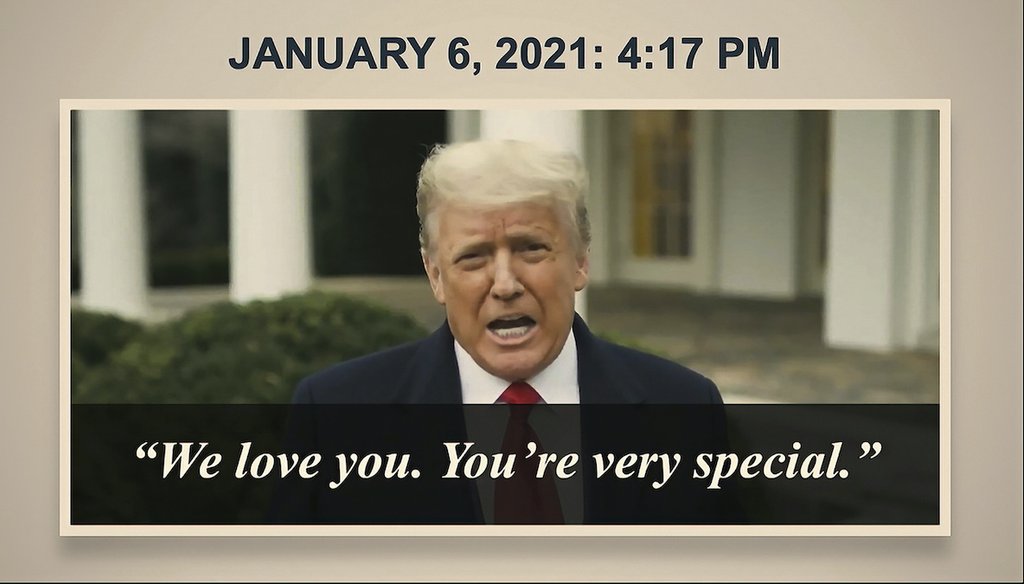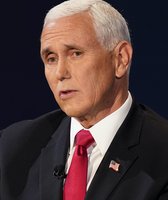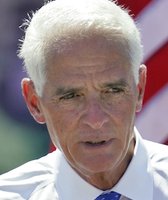Stand up for the facts!
Our only agenda is to publish the truth so you can be an informed participant in democracy.
We need your help.
I would like to contribute

In this image from video, a video from Donald Trump is shown to senators as House impeachment manager Rep. Jamie Raskin, D-Md., speaks during the second impeachment trial of former President Donald Trump in the Senate at the U.S. Capitol. (AP)
As the evidence phase of the impeachment trial of former President Donald Trump started, House impeachment managers sought to portray Trump as the "inciter-in-chief" of a dangerous insurrection.
Their presentation focused on Trump’s statements and actions in the runup to the Jan. 6 riot at the U.S. Capitol.
"To us, it may have felt like chaos and madness, but there was method in the madness that day," said House impeachment manager Jamie Raskin, D-Md., on the second day of the trial.
The rest of the presentation highlighted months of Trump’s rhetoric and new Capitol security footage of the Jan. 6 riot.
PolitiFact has independently documented Trump’s speech in the days after the riot. Here, we compiled the major points of Trump’s rhetoric before, during and after the riot that the Democrats outlined.
Sign up for PolitiFact texts
We also clarified a few confusing minutes at the day’s end when Sen. Mike Lee, R-Utah, objected to the way Democrats used his name on the floor.
Democrats use timeline to say Trump laid the groundwork
House impeachment managers started their case against Trump by going back to what he told voters long before the election.
For months, Trump repeatedly told his supporters that Democrats had "rigged" the election. Trump ramped up the rhetoric after he lost the election, filing unsuccessful court challenges in battleground states. After he racked up defeats in court, Trump’s tactics turned toward encouraging his supporters via Twitter to gather on Jan. 6.
Here are some examples:
Dec. 12: On the day of pro-Trump rallies in Washington, D.C., Trump tweeted "Wow! Thousands of people forming in Washington (D.C.) for Stop the Steal. Didn’t know about this, but I’ll be seeing them! #MAGA."
Dec. 19: Trump tweeted, "Big protest in D.C. on January 6th. Be there, will be wild!"
Dec. 26: Trump tweeted: "The ‘Justice’ Department and the FBI have done nothing about the 2020 Presidential Election Voter Fraud, the biggest SCAM in our nation’s history, despite overwhelming evidence. They should be ashamed. History will remember. Never give up. See everyone in D.C. on January 6th."
Jan. 1: "The BIG Protest Rally in Washington, D.C., will take place at 11.00 A.M. on January 6th. Locational details to follow. StopTheSteal!" Trump tweeted.
Trump’s final direction to supporters came during his "Save America" rally around noon Jan. 6, when he repeated his Pants on Fire claim that he won.
"Our country has had enough," Trump told his supporters. "We will not take it anymore and that’s what this is all about. To use a favorite term that all of you people really came up with, we will stop the steal."
Trump repeatedly said there was a need to fight and pressured Vice President Mike Pence to do what he could to stop Congress from certifying states’ electoral votes: "We’re going to have to fight much harder, and Mike Pence is going to have to come through for us. And if he doesn’t, that will be a sad day for our country because you’re sworn to uphold our Constitution. Now it is up to Congress to confront this egregious assault on our democracy."
Trump then invited the crowd to go to the Capitol: "And after this, we’re going to walk down, and I’ll be there with you. ... We’re going to walk down to the Capitol, and we’re going to cheer on our brave senators, and congressmen and women. We’re probably not going to be cheering so much for some of them, because you’ll never take back our country with weakness. You have to show strength, and you have to be strong."
Trump’s allies argue that because he told the crowd to protest "peacefully" he was not inciting them to attack. "I know that everyone here will soon be marching over to the Capitol building to peacefully and patriotically make your voices heard," Trump said.
House impeachment manager Madeleine Dean, D-Pa., said Trump’s mention of peace paled next to all of the times he urged supporters to fight.
"The implication of the president’s tweets, the rally, the speeches were clear," she said.
By the time Trump finished his speech, crowds had already started to gather outside the Capitol.
Trump never joined them, but did tweet during the afternoon and night and released a video statement.
The Democratic legal team argued that Trump’s failure to condemn the assault as it was happening inspired the mob to press on. They played a video of one man outside of the Capitol reciting a 2:24 p.m. Trump tweet into a bullhorn. The tweet said: "Mike Pence didn’t have the courage to do what should have been done to protect our Country and our Constitution, giving States a chance to certify a corrected set of facts, not the fraudulent or inaccurate ones which they were asked to previously certify. USA demands the truth!"
Roughly 14 minutes later, Trump tweeted that the crowd should support Capitol Police and "stay peaceful. By that point, the mob had already shattered windows as they pushed inside the building.
Democrats recounted how his 4:17 p.m. video statement repeated false claims about the fraudulent election and said, "We have to have peace. So go home. We love you. You’re very special."
Trump rehashed those themes in his final tweet of the night. He wrote: "These are the things and events that happen when a sacred landslide election victory is so unceremoniously & viciously stripped away from great patriots who have been badly & unfairly treated for so long. Go home with love & in peace. Remember this day forever!"
Confusing objection ends day two
House impeachment managers ended the day with a focus on what Trump was doing during the riot. Sen. Mike Lee objected to the way they told his part of the story.
Rep. David Cicilline, D-R.I., said that during the riot Trump called Lee by accident when he meant to call Sen. Tommy Tuberville, R-Ala. Lee then handed his phone to Tuberville.
"Sen. Lee then confirmed that he stood by as Sen. Tuberville and President Trump spoke on the phone and on that call Donald Trump reportedly asked Sen. Tuberville to make additional objections to the certification process. That's why he called," Cicilline said.
But according to Lee, he is not the source of what Trump told Tuberville.
Before the Senate adjourned for the night, Lee said, "I never made those statements," and asked that they be removed from the day’s record.
Here’s the issue: Lee is on the record in the Deseret News as saying that Trump mistakenly called him instead of Tuberville. But a CNN report about the same phone call quoted an unnamed source — not the senator — as its source about what Trump and Tuberville talked about.
House impeachment manager U.S. Rep. Jamie Raskin, D-Md., withdrew the remarks but said they might come up again later.
"This is much ado about nothing, because it’s not critical in any way to our case," Raskin said.
RELATED: Fact-checking Day 1 of Trump’s second impeachment trial: To try or not to try
Our Sources
Deseret News, How President Trump misdialed Utah Sen. Mike Lee while the Capitol was under siege, Jan. 7, 2021
CNN, As riot raged at Capitol, Trump tried to call senators to overturn election, Jan. 8, 2021
PolitiFact, A timeline of what Trump said before Jan. 6 Capitol riot, Jan. 11, 2021
PolitiFact, A timeline of what Trump said before Jan. 6 Capitol riot, Jan. 11, 2021
PolitiFact, What the House Democrats’ impeachment memo leaves out, Feb. 3, 2021
New York Times, ‘Be There. Will Be Wild!’: Trump All but Circled the Date, Jan. 6, 2020
Just Security, Incitement Timeline: Year of Trump’s Actions Leading to the Attack on the Capitol, Jan. 11, 2021
Washington Post, How one of America’s ugliest days unraveled inside and outside the Capitol, Jan. 9, 2021
Washington Post, Multiple people stabbed after thousands gather for pro-Trump demonstrations in Washington, Dec. 12, 2021
ABC, Trump allies helped plan, promote rally that led to Capitol attack, Jan. 8, 2021
Washington Post, Trump supporters plan D.C. rally on day Congress certifies election results, Dec. 22, 2020
CNBC, Pro-Trump dark money groups organized the rally that led to deadly Capitol Hill riot, Jan. 9, 2021
Rev.com, Transcripts of Trump




















































